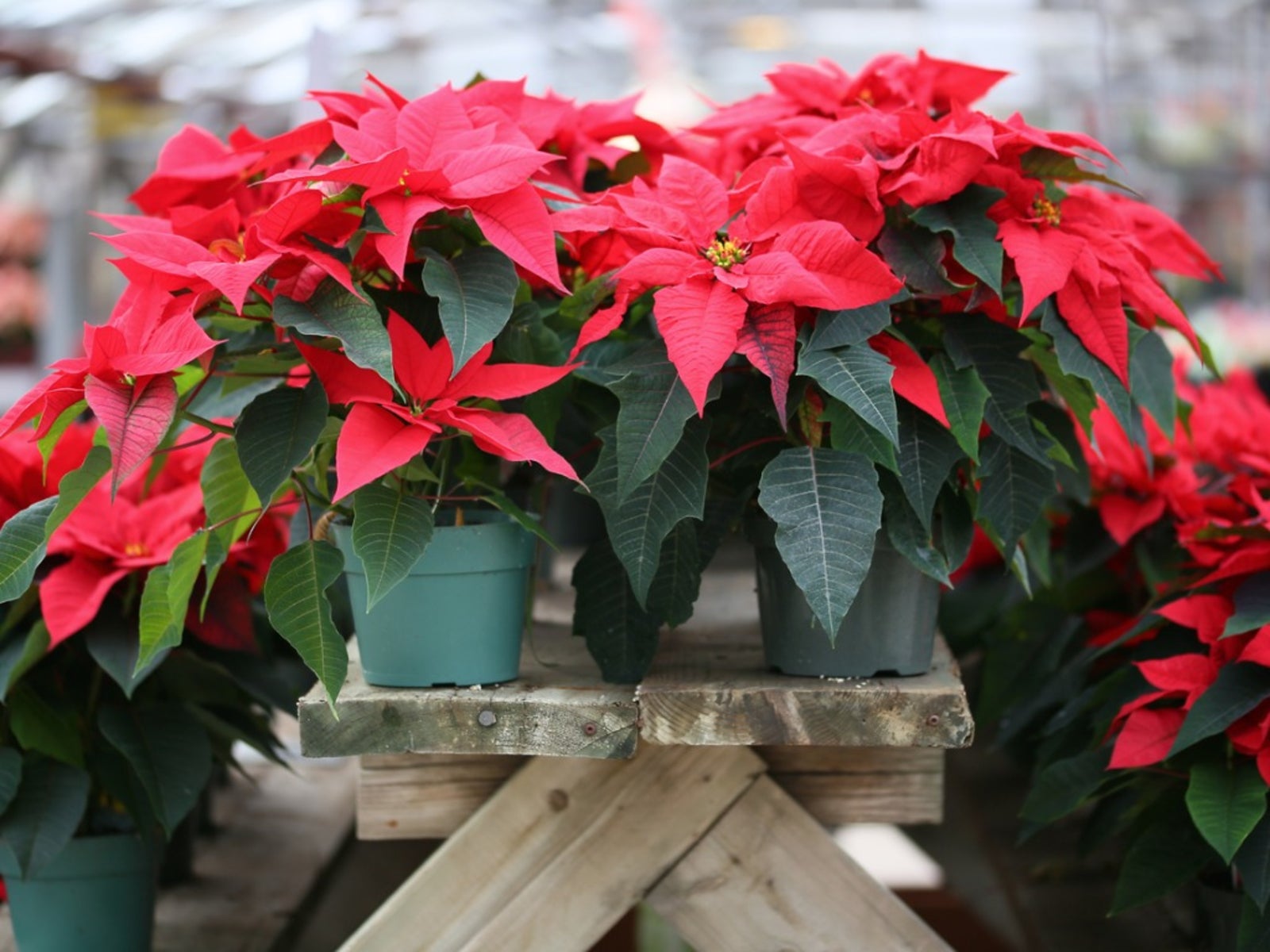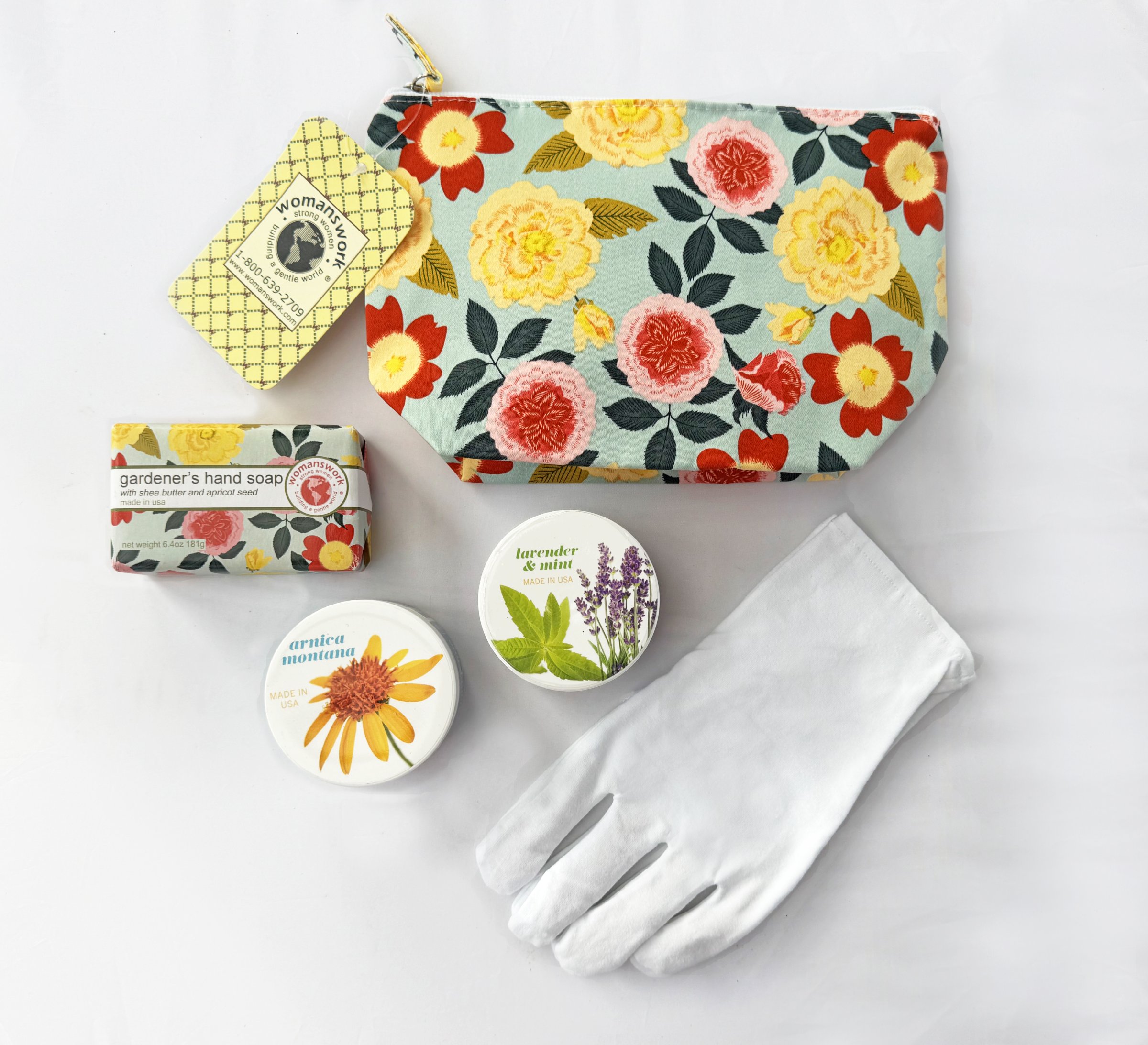How To Make A Poinsettia Flower Year After Year


Amy Grant
The poinsettia is native to Central America, near southern Mexico. It was introduced to the United States in 1828 and got its name from Joel Roberts Poinsett. Poinsett was the first U.S. Ambassador to Mexico with a passion for botany. Upon discovering this shrub, he became so enchanted with its bright red bracts that he sent some to his South Carolina home to be propagated.
Poinsettias are the number one selling houseplant in the USA. These tropical beauties are sold as annuals during the Christmas season, but in their native regions they are actually perennials. This means there’s no reason to dump the plant after the holidays. Instead, with proper poinsettia care, you can get it to bloom again. How do you get a poinsettia to rebloom? Keep reading to learn how to make a poinsettia flower.

Looking for that perfect, one last thing to add to your list? Check out the Gardening Know How shop.
Why are Poinsettias Red?
Poinsettias (Euphorbia pulcherrima) in their native regions of Mexico and southern Guatemala may be found as rather scraggly plants growing in seasonally dry tropical forests.
Their major attribute, of course, are their stunning red blooms or bracts. Bracts are special leaves that have high levels of anthocyanins which gives them their brilliant color.
Poinsettias are photoperiodic, which means they form their blooms (colored bracts) when they’re exposed to longer periods of darkness. When they’re not supplied with this darkness, the plants remain green. Their small yellow flowers are found in the center of the leaf branches.
Also during the winter solstice, there is less light and often heat available to houseplants. Like other kinds of houseplants, poinsettias tend to drop leaves and look rather barren, so many people simply discard them after the holidays. But by reading our tips below, you can get your poinsettia ready to bloom again the successive holiday season.
When Do Poinsettias Bloom Naturally?
In their indigenous habitat, poinsettias bloom in the winter, November or December, as a response to the shortening of days. As the northern hemisphere begins to tilt away from the sun, the days become shorter. The response of poinsettias is to go into reproductive mode wherein the bracts turn from green to red.
Gardening tips, videos, info and more delivered right to your inbox!
Sign up for the Gardening Know How newsletter today and receive a free copy of our e-book "How to Grow Delicious Tomatoes".
Timeline to Get Poinsettias to Rebloom
With a little help from you, poinsettias can rebloom the following winter. Flowering is initiated at the fall solstice in September after shortening the amount of light the plant receives. After about 2 months of less light, flowering begins about a month prior to Christmas.
How to Make a Poinsettia Bloom Again
As mentioned, less light triggers a response in poinsettias, which results in the colored bracts or blooms. In order to get the plant to bloom again, you must artificially shorten its days. Flower formation is actually triggered by periods of darkness. During the day, poinsettia plants require as much bright light as possible in order to absorb enough energy for color production. Here’s how to get your poinsettia to rebloom:
Grow the plant as you would other houseplants during the winter until March or April. Then begin to initiate reblooming.
- First reduce the amount of water the poinsettia receives and place it in a cool area that’s around 60 F (16 C).
- In May, cut the stems back to 3-6 inches (7.6-15 cm). Divide the plant if necessary and repot in good quality potting soil into containers with drainage holes. Water well and treat with a natural broad spectrum fungicide.
- Put the newly potted poinsettia plants in a sunny window.
- Water when the soil feels dry, and fertilize with a complete food every 2-3 weeks, or according to the product’s directions for flowering plants.
- When outdoor temperatures are above 60 F (16 C), put the poinsettias outside in a partially shaded area, and gradually move them to a full sun area.
Light Requirements
During their holiday growing season, poinsettias require moist soil and temperatures between 65-70 F (18-21 C), but when you are trying to get them to rebloom, they need no more than 10 hours of light and ideally, 14 hours of darkness.
How can you achieve these light requirements? Place the plants outside as described above, then move them into a closet or under a box from 5:00 pm to 7:00 am until Thanksgiving when their bracts should be turning red. Once flower bracts have developed definite color, you can
At this time they can again be grown indoors as a houseplant.
Water
Limit watering in September/October and give the poinsettia bright daylight temperatures between 65 and 70 degrees F. (16-21 C.) with total darkness at night and cooler temperatures of around 60 degrees F. (15 C).
Water poinsettias when the soil feels dry to the touch. Water until water runs through the drainage holes and then allow the soil to dry out an inch or two (2.5-5 cm) from the surface before watering again. Take care not to allow the soil to get soggy. Slight wilting from drought stress is okay, but overwatering can result in fungal disease which can kill the plant.
Fertilizer
Fertilize poinsettias as needed with a complete soluble fertilizer for flowering plants every couple of weeks or as needed.
How to Prune Poinsettias
Prune poinsettias in the spring and summer, but also pinch out the tips regularly during the growing season to promote a bushier plant. Remove new buds from May to August to encourage branching.
In the past, only bright red poinsettias were available to us as consumers. Now you can find poinsettias in different varieties and colors, some with heavier bracts and some variegated. They are also bred to have pink or white bracts. These beautiful plants no longer need to be a throw-away when the holiday season has ended, but can be revived year after year.
Note: The poinsettia is not considered toxic, but eaten in large amounts can cause considerable stomach upset for pets, as well as a choking hazard for young children and small pets.
This article features products available from third-party vendors on the Gardening Know How Shop.

Nikki Tilley has been gardening for nearly three decades. The former Senior Editor and Archivist of Gardening Know How, Nikki has also authored six gardening books.
- Amy GrantWriter
-
 Looking For Plants To Give You The Soft And Fuzzies? Try These 5 Fuzzy Leaf Plant Options
Looking For Plants To Give You The Soft And Fuzzies? Try These 5 Fuzzy Leaf Plant OptionsLovers of texture, drama, silver foliage and tactile plants will adore these special sensory garden additions. These fuzzy leaf plant options will leave you all aglow
By Susan Albert
-
 Get Ready For A Summer Of Hummers! Grow These Full Sun Hummingbird Plants and Flowers
Get Ready For A Summer Of Hummers! Grow These Full Sun Hummingbird Plants and FlowersIf you’re lucky enough to enjoy a sunny backyard, make sure you are maxing out on your pollinator opportunities and grow these full sun hummingbird plants and flowers
By Tonya Barnett